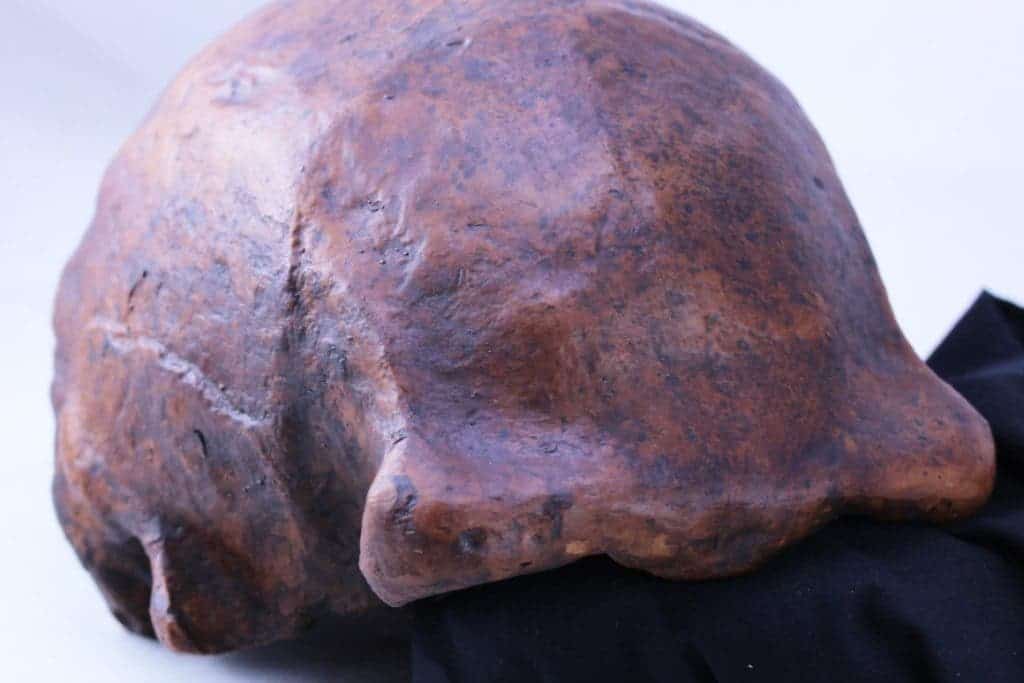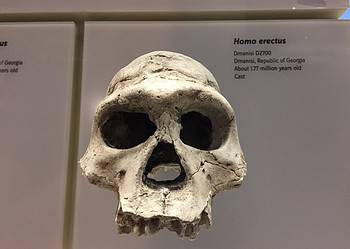A million years before humans made their first baby steps out of Africa, one of our ancestors was already busy fashioning tools and exploring the world walking on two legs. Homo erectus is famous for being the first hominin to walk upright. Now, a new study suggests that our ancestor was the most successful member of the genus Homo, having survived from 1.8 million years ago until as recently as 108,000 years ago.

The Ngandong terrace, a floodplain on the Indonesian island of Java, is the site of the largest collection of Homo erectus fossils in the world, showing that the human ancestor was able to travel a huge distance from its birthplace in Africa. Nearly a century ago, anthropologists have unearthed at least a dozen partial skulls and two shin bones at the site.
For a long time, scientists have tried to date the site, but until recently all these efforts return wildly different estimates from as early as 27,000 to half a million years old. The fact that the original bonebed first excavated by Dutch geologists in the 1930s had been lost made the investigation all the more challenging.
In their new study, researchers at the University of Iowa and the Institute of Technology in Bandung, Indonesia, used modern techniques (uranium-series dating, luminescence, and electron-spin resonance) to date the landscape and some animal fossils excavated from the Ngandong terrace. To find the original bonebed, the researchers employed maps and journals inherited by the grandchildren of one of the Dutch geologists.

They also dated the stalagmites in the caves of nearby mountains, showing that the mountains themselves rose at least half a million years ago, diverting the Solo river into the Kendeng hills and forming the Ngandong terrace. Entangling the thread even further, the researchers found that the terrace is between 140,000 and 92,000 years old.
Although they couldn’t find new Homo erectus fossils, the researchers gathered hundreds of animal remains — ranging from water buffalo to elephants — which were found in the same layer as the Homo erectus skulls. Using a sophisticated computer model, the researchers weighed the different dates for each fossil, coming up with an age range of the site.
They conclude that although Homo erectus went extinct in many other parts of the world by this date, the species survived on Java until 108,000 to 117,000 years ago. Modern humans arrived on the island about 35,000 years after the last known appearance of Homo erectus.
“This site is the last known appearance of Homo erectus found anywhere in the world,” says Russell Ciochon, co-corresponding author on the study. “We can’t say we dated the extinction, but we dated the last occurrence of it. We have no evidence Homo erectus lived later than that anywhere else.”

This means that around the same time, our species, Homo sapiens, shared the planet with at least seven other different hominin species, including Denisovans and Neanderthals.
Around 130,000 years ago, the environment at Ngandong changed, and perhaps this may have sealed Homo erectus’ fate.
“There was a change in climate,” Ciochon explains. “We know the fauna changed from open country, grassland, to a tropical rainforest (extending southward from today’s Malaysia). Those were not the plants and animals that Homo erectus was used to, and the species just could not adapt.”
However, considering that the researchers couldn’t find direct evidence of Homo erectus fossils, the debate isn’t settled yet. For instance, the animals at the site could have been butchered by Denisovans whose presence in the area is established. More research may provide more insight in order to clear some of the mist surrounding the Ngandong site.
The findings appeared in the journal Nature.






